As a Teacher #PicturesMeanBusiness
can inspire Your Children!
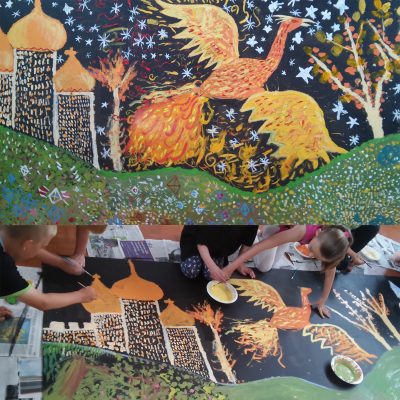
Not all children (or adults) come to stories and communication through words. In teaching writing, kids are often most inspired when they can draw a character and create a visual world around it, and then words come more naturally to help the story along. They’re fascinated by pictures but many have no idea that real people create the images they see in books. Allow real-life illustrators to inspire them!
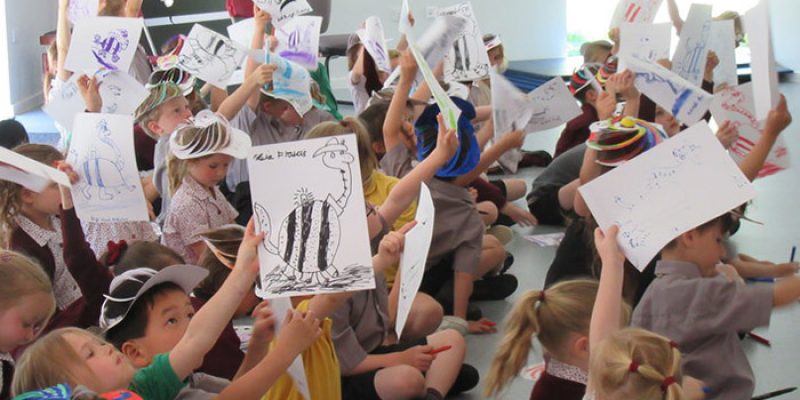
Useful info:
- The CILIP Carnegie and Kate Greenaway Medals are the UK's oldest and most prestigious children's book awards.
- The Centre for Literacy in Primary Education discusses the importance of visual literacy and provide free resources you can use with your class.
- World Book Day Imagination Channel Get inspiration from Authors and Illustrators.
How are some ways you can do this?
Mention Illustrators By Name
When you create a classroom display around a book, be sure to include the illustrator’s name as well as the writer’s. When you read a book to your class, read out both names, and have them find out interesting facts about both creators.
Display Artwork on Your Walls
Discuss Illustrators with your Class
In a culture that increasingly relies on images, it’s important to build your children’s visual literacy, helping them decode what they’re looking at. Here are some possible exercises:
- Story scrolls: With a roll of paper (cheap lining paper ideal) tell a story (traditional tales work well), and get the children to draw scenes *in sequence* . (It doesn’t matter if some things get duplicated. So if it’s Little Red Riding Hood, it’s OK if several kids want to draw a wolf.) Start with the beginning, end with the ending. Oil pastels are a good tool, big and bold. The finished scroll can be used easily for class storytellings. It can be opened in the middle: so instead of starting at the start, new stories can be made by revealing parts of the cross fro the centre. Eg, “Once there was a woodcutter” instead of “Once there was a little girl with a red hood”.
- Stories in pictures: with your class, try to work out elements of the story that you learn from the pictures that aren’t mentioned in the text. Are there any parallel stories going on in the pictures? Do the pictures ever contradict what’s said in the text? Do the pictures make a straight text funny? What details do the pictures communicate that aren’t in the words?
- Making moods: Look at a book and decide how the pictures set a mood for the book. Do the colours create emotions beyond what’s written in the words? Does the colour palette change through the book to reflect the changing mood of the story? Does the illustrator use more cool colours or warm colours? Which colours does the illustrator use to make the important elements of the story stand out?
- Style council: Find some illustrators who work in very different styles. Have the children draw an animal or a self-portrait as they think these different illustrators would draw them. Alternatively, find an animal (such as a tiger) that appears in very different styles in several different books and have the children copy them to learn how the illustrators created the images. Copying paintings is perfectly fine as a way of learning how to draw; sometimes people only really look properly at an image when they take the time to copy it.
- Reinterpret texts: Read a picture book to your class, but stop at a certain page and don’t show that picture to the children. Have them draw how they think that page might look. At the end, compare their interpretations to the illustrator’s interpretation of that scene.
- Reimagine scenes: Give the children a line of text, (for example, ’On Tuesday, the aliens arrived.’) Have them interpret it in two completely different ways, using colour and shapes to change the mood of the picture. For example, the first picture might be very menacing, in dark colours, with a spaceship hovering over a jagged city skyline, slicing through the dark with its harsh beam of light. In the second picture, a friendly-looking family of aliens might be arriving with their hover-van full of belongings to their new home, looking shy, with the child as a neighbour, poking their head out of their own door, ready to welcome them. The street behind them might be lined with trees full of warm, autumnal leaves, and the aliens might be drawn in soft, rounded shapes that show they’re not scary, possibly even wearing clothes. Or perhaps it’s a little alien child arriving at your school and looking uncomfortable and awkward in the school uniform and not fitting into the desk.
- Story murals: These are a lovely long lasting thing in a school. Classes can go and visit them and discuss what they see and guess the story or write new ones. Having art and illustrations around the school helps inspire stories, and helps celebrate illustrators too!
Invite Illustrators to Visit Your School
You’ll be amazed at the way your children will come alive when they see an illustrator live drawing, or getting them to draw. Paid visits also are a vital source of income to illustrators, so you’ll be supporting their careers at the same time as inspiring your children. It’s a win-win situation if you can encourage sales of the illustrator’s books to your children during the visit: you’ll help the illustrator be able to keep at their job, and the children will have an amazing opportunity to get a dedicated copy of the book they’ve just been learning about, something they may treasure for their whole lives.
Get some copies for the school library, so the kids won’t get fired up but then hit a dead end if they want to read the book they’ve gotten excited about. If the school can’t afford it, ask some parents for help. Alert the local newspaper! The coverage will help the illustrator and will also make your school look pro-active and exciting.
Alert Your Children To Opportunities in The Area
Is there a book festival in your town, or does the local library host author visits? Encourage your children to visit them, or contact the festival to see if there’s a way you can bring the whole class along to an event. If you’re hiring buses, remember to leave extra time at the end so each child can have the opportunity to meet the author and get their book signed. That contact with the illustrator may be what inspires their creativity for years to come.
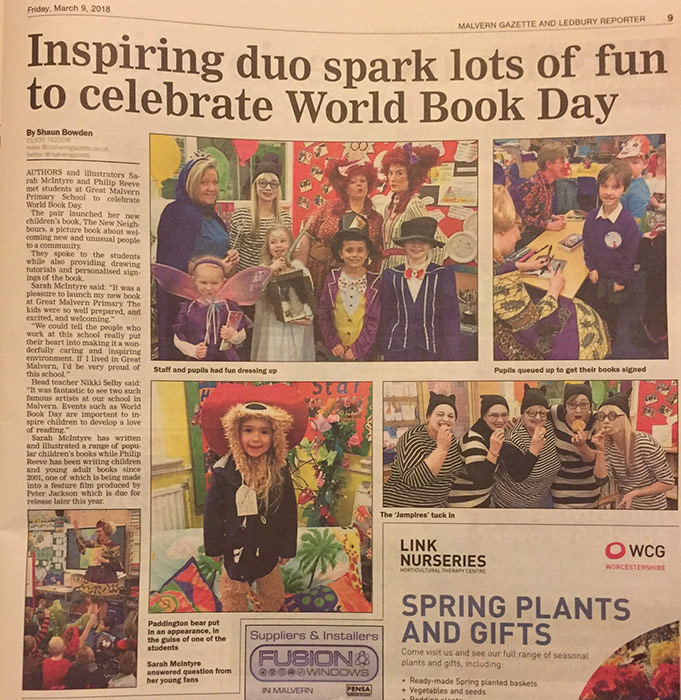
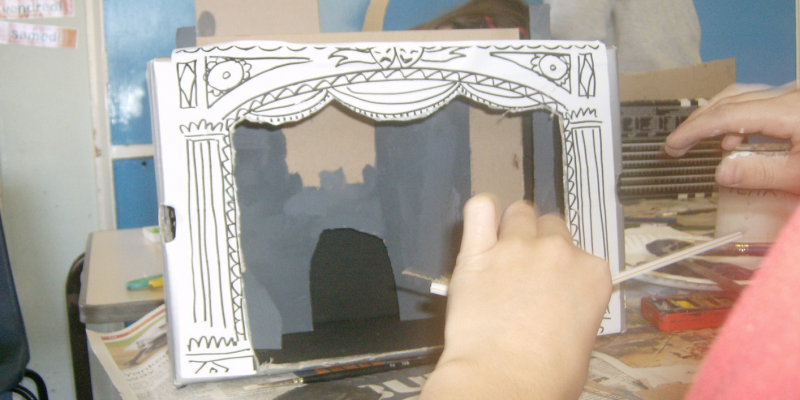
NAME YOUR CLASSES AFTER ILLUSTRATORS!
Glebe Primary School in Brighton sent out a tweet with the #PicturesMeanBusiness hashtag, saying that the campaign had inspired them to name each class after an illustrator. They planned to celebrate these illustrators with displays and projects. If you do this, be sure to contact your class’s illustrator and share what your class has created; this can be such a boost to the children and to the illustrator!
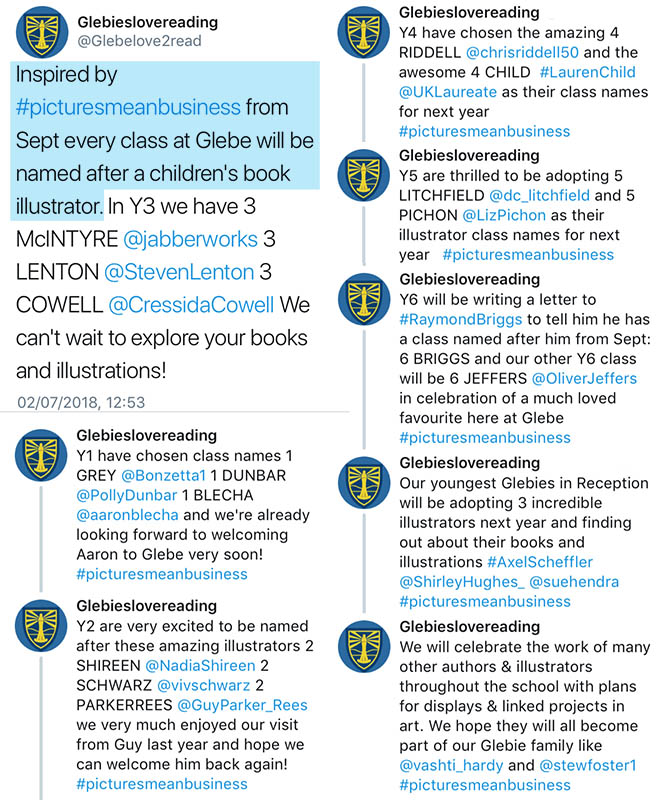
Hear From The Illustrators
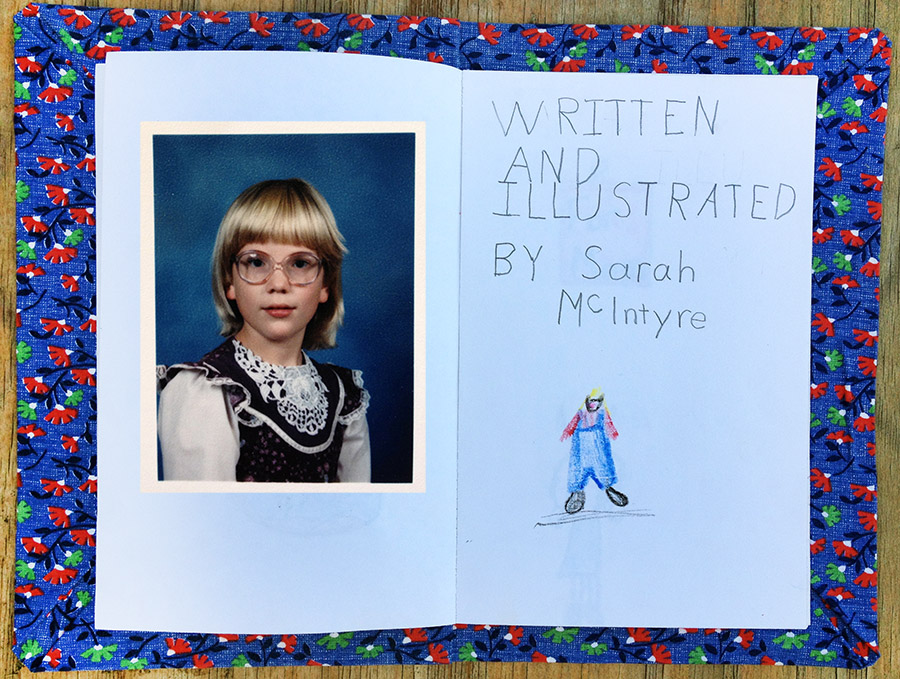
Sarah McIntyre
"I struggled socially at school, particularly in primary school. Drawing and art lessons were some of the few things that made school bearable for me. I remember the first time it occurred to me that an illustrator was a real person, when a writer-illustrator named Jasper Tomkins visited my school. He even brought along a full-size original painting he’d done from his picture book, ‘Nimby’, about a cloud who finds a friend. I think our school librarian hosted the visit, and it made a huge impact on me. Years later, I saw a talk by a cartoonist named Alison Bechdel at my university, and I think watching her tell her story in a fascinating way, in comics form, hugely influenced my choice of career. "
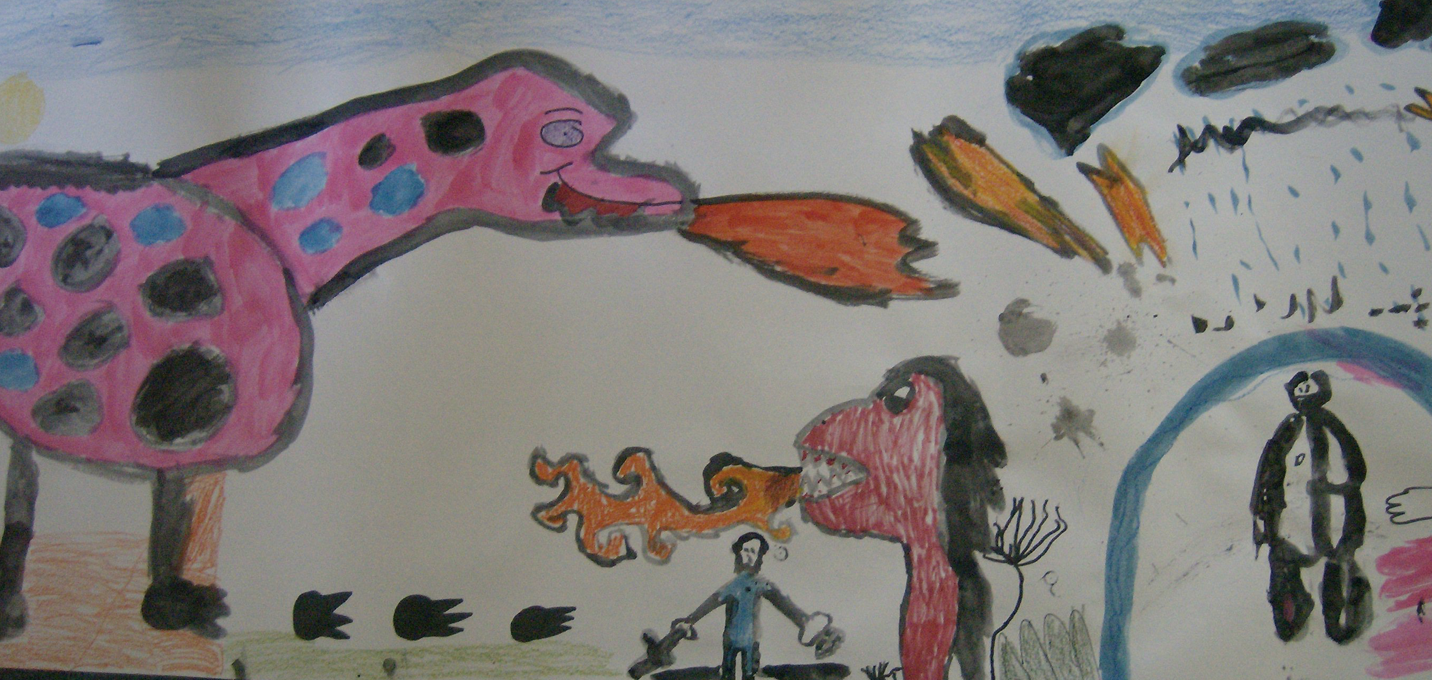
JAMES MAYHEW
Illustration was *my* way into books (and ultimately, publishing). It's why I fell in love with books. Personally I think all schools and classes should be doing more art based on story. I have found that if I tell a folk tale, and let the children illustrate scenes from it, they all do different parts of the story, they all have ownership over their art, they can all really retell and remember the story *because * they have illustrated it. Of course not all teachers have the confidence or skills, which is why ILLUSTRATOR visits are so important. Book weeks and world book day tends to focus on the "A" word (Author). Having an illustrator is also valid!
